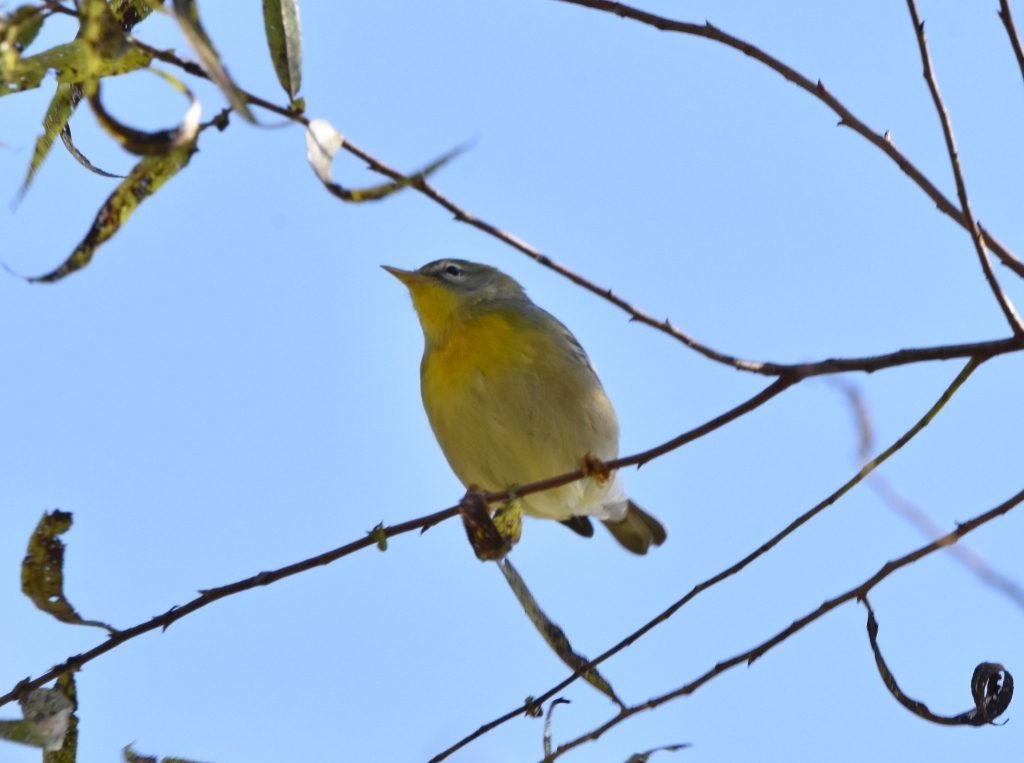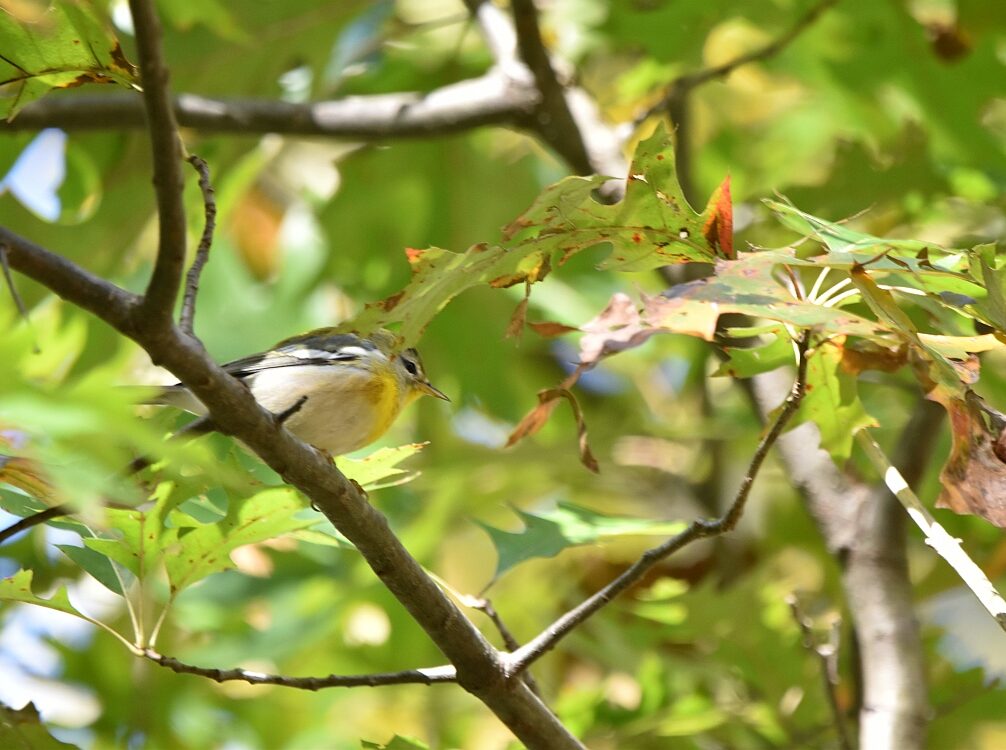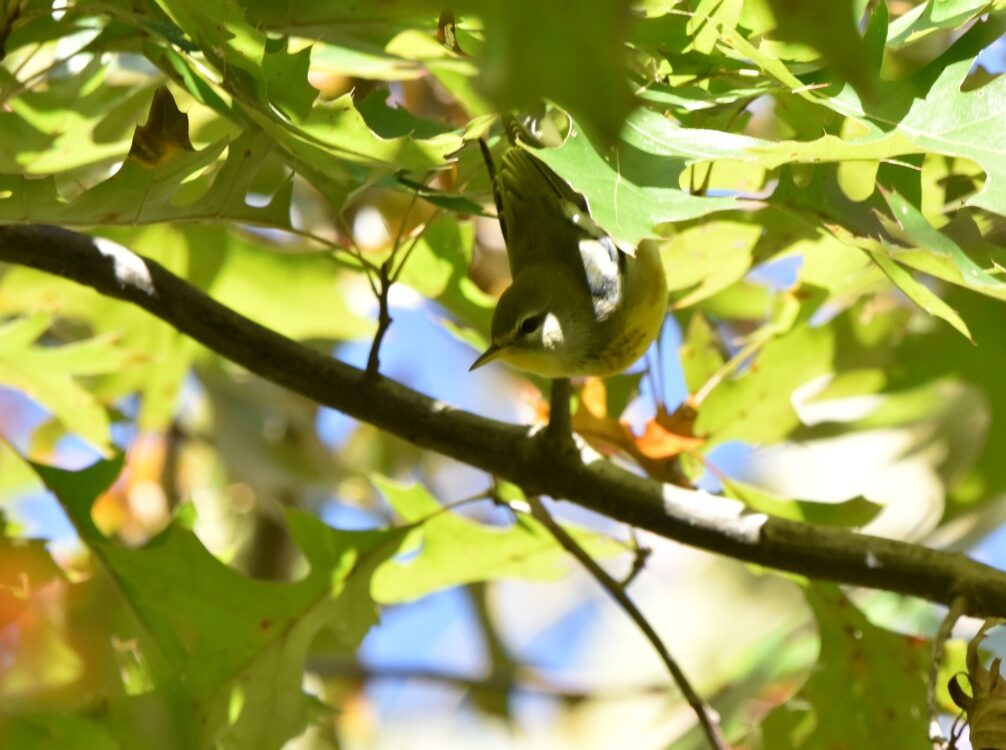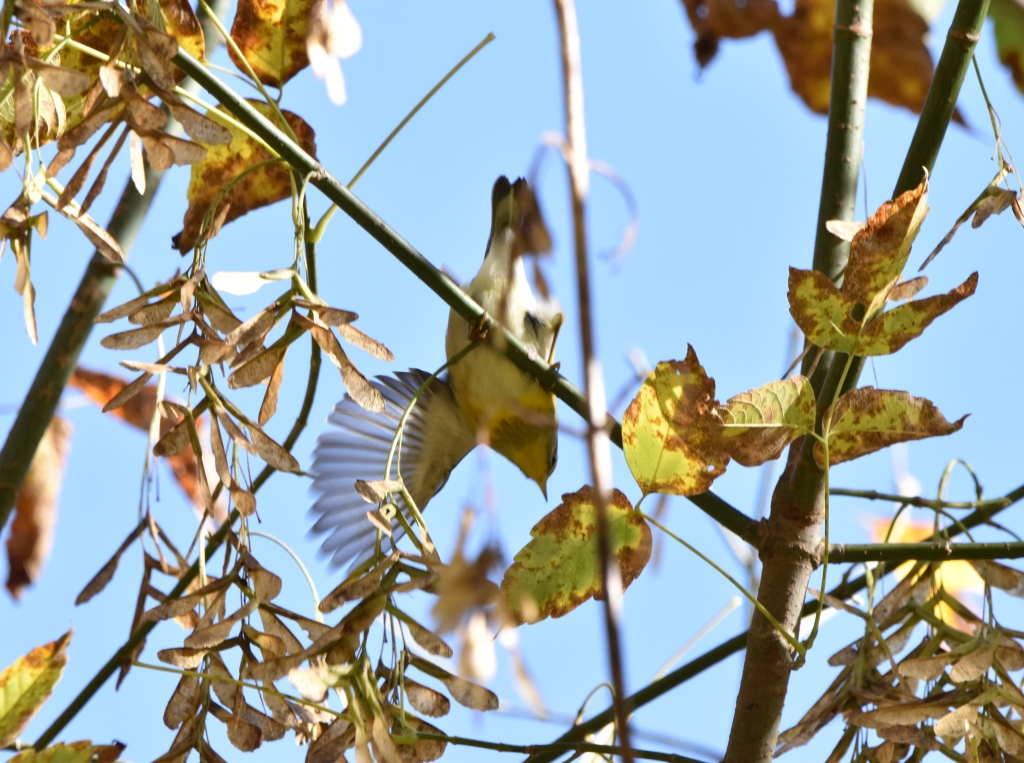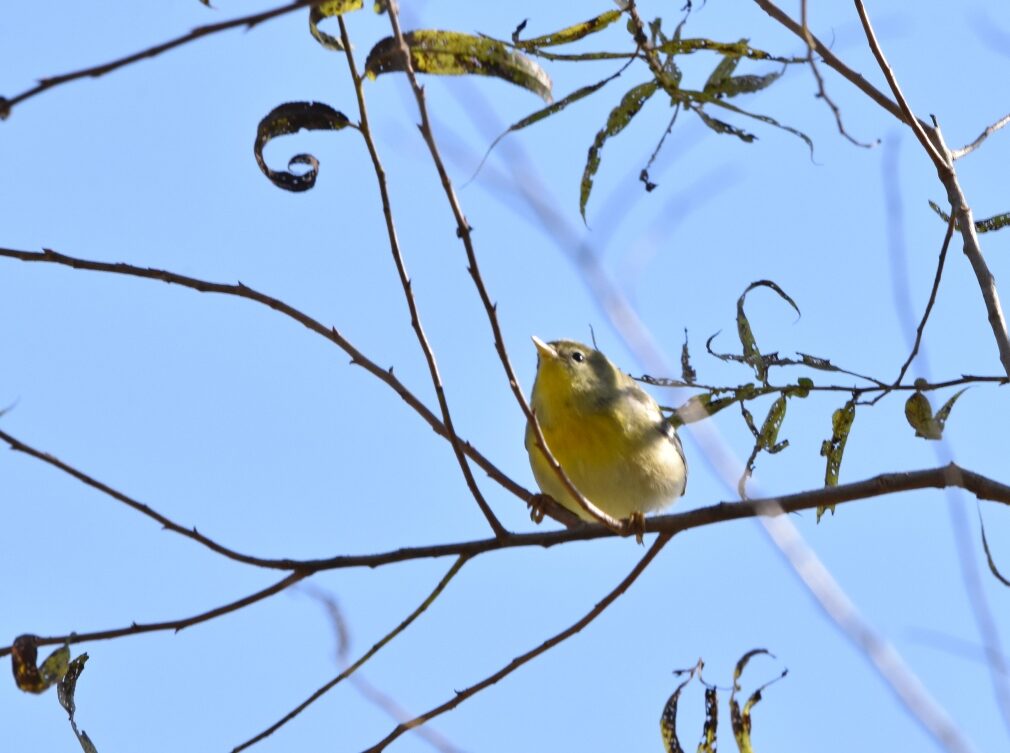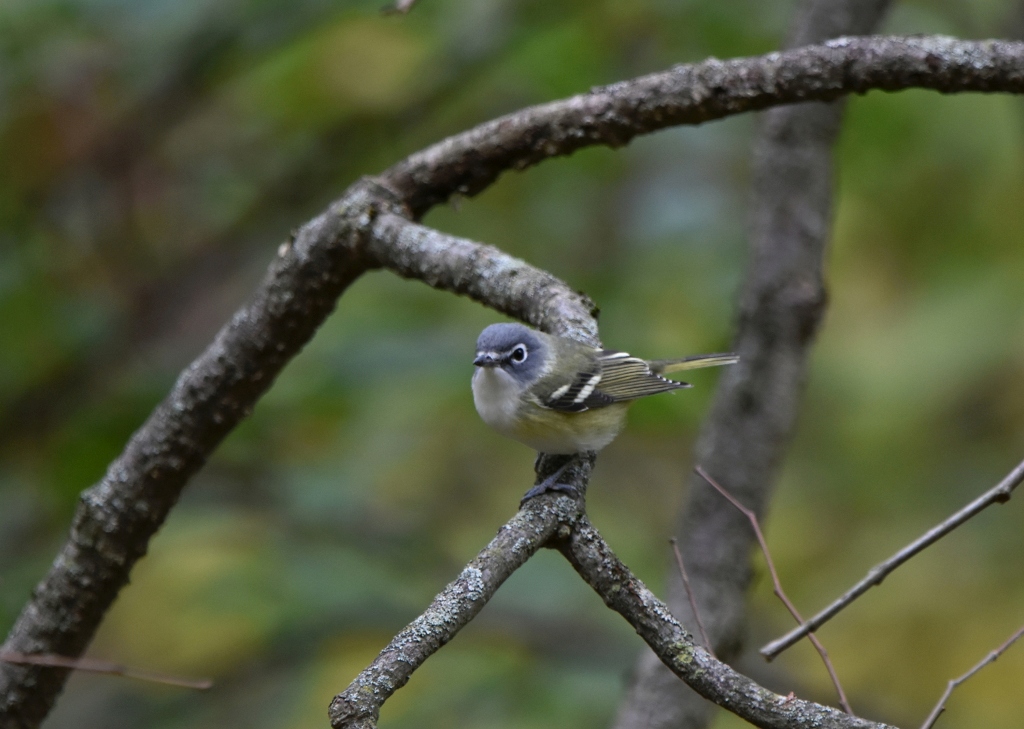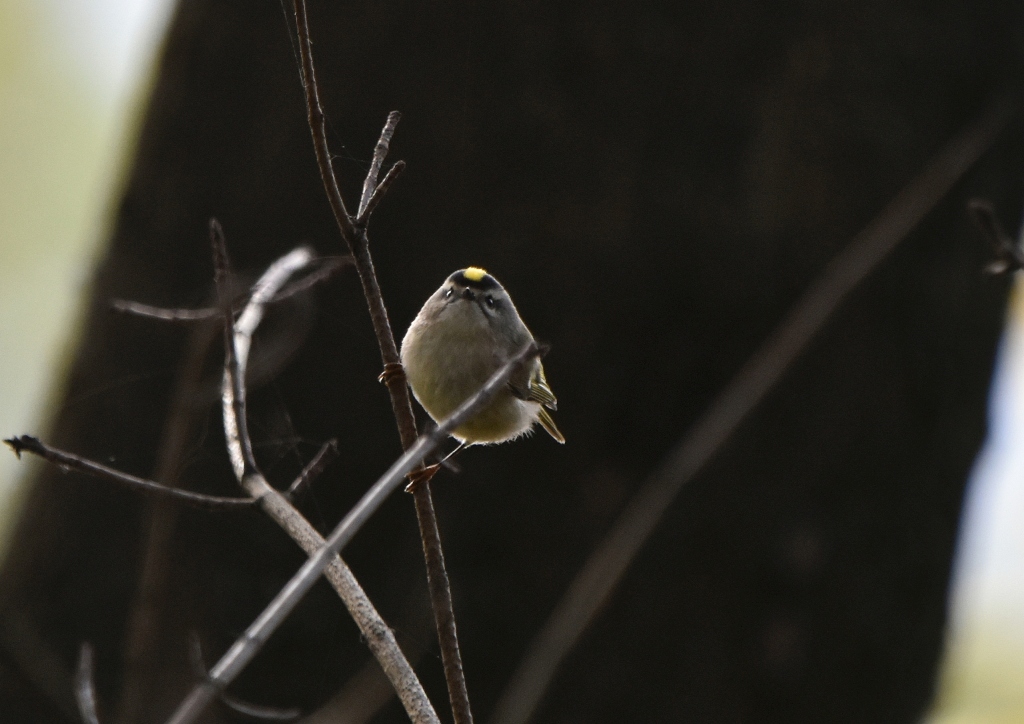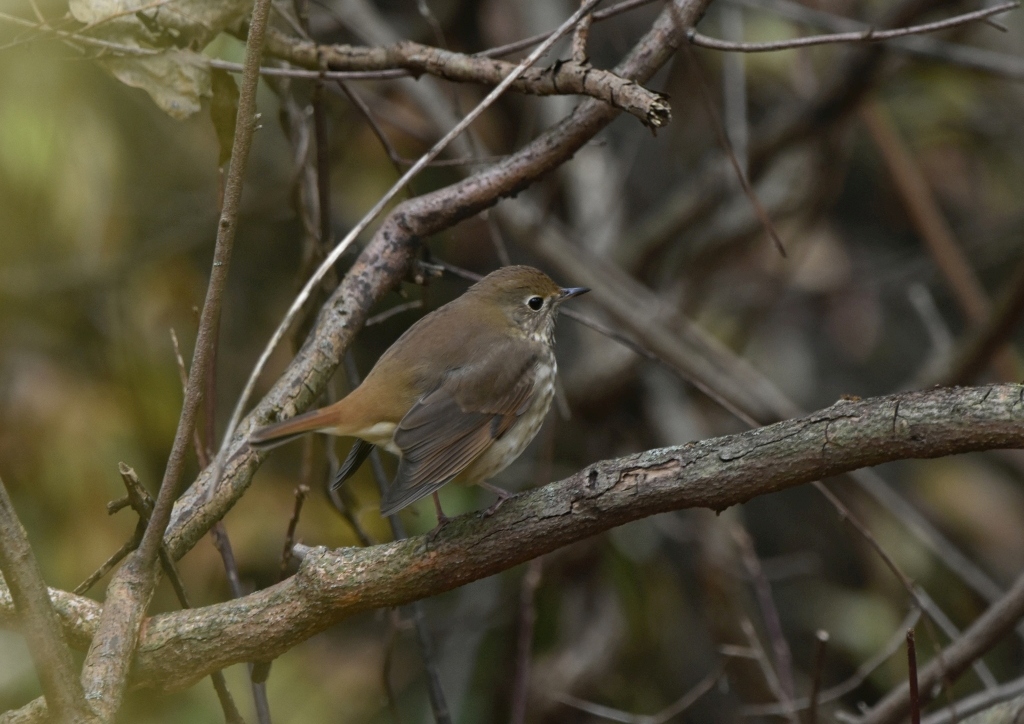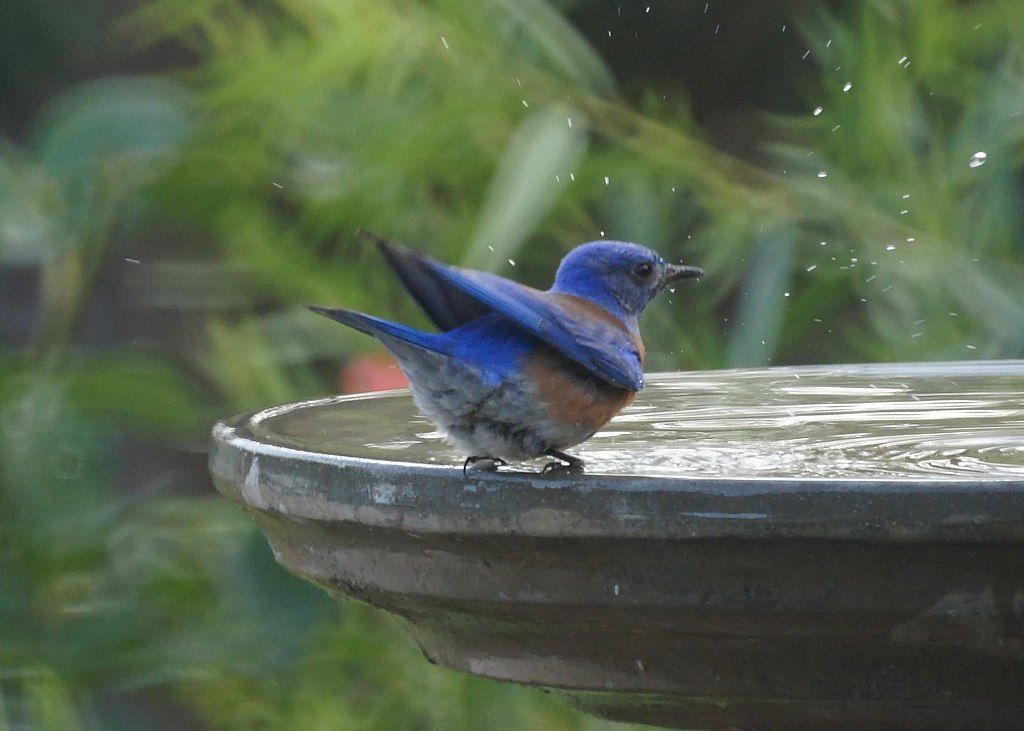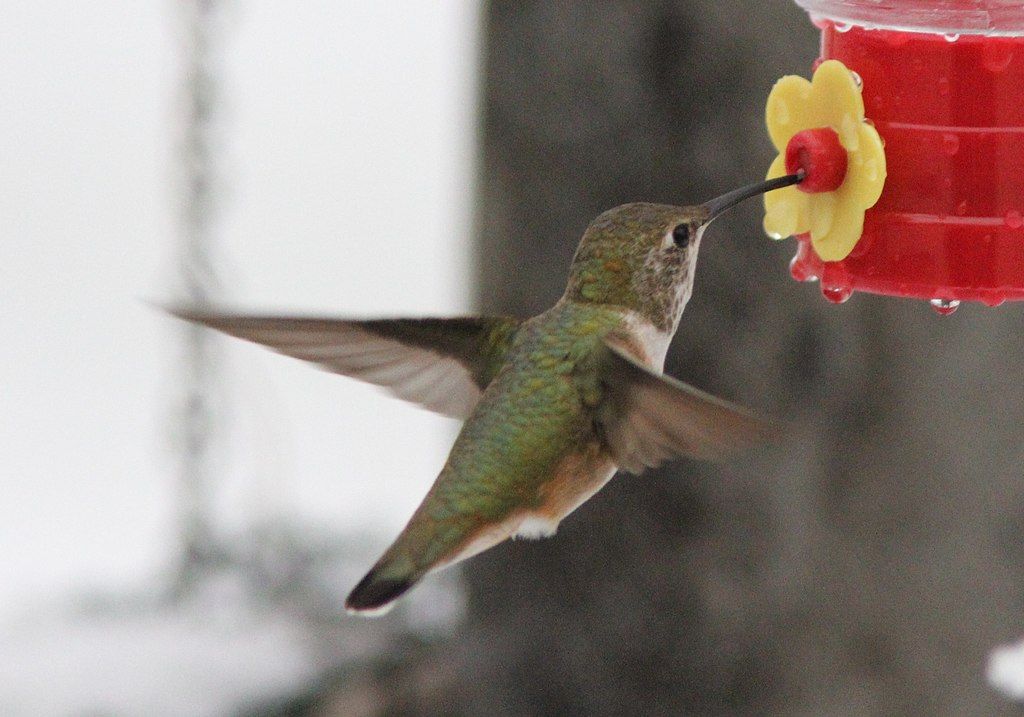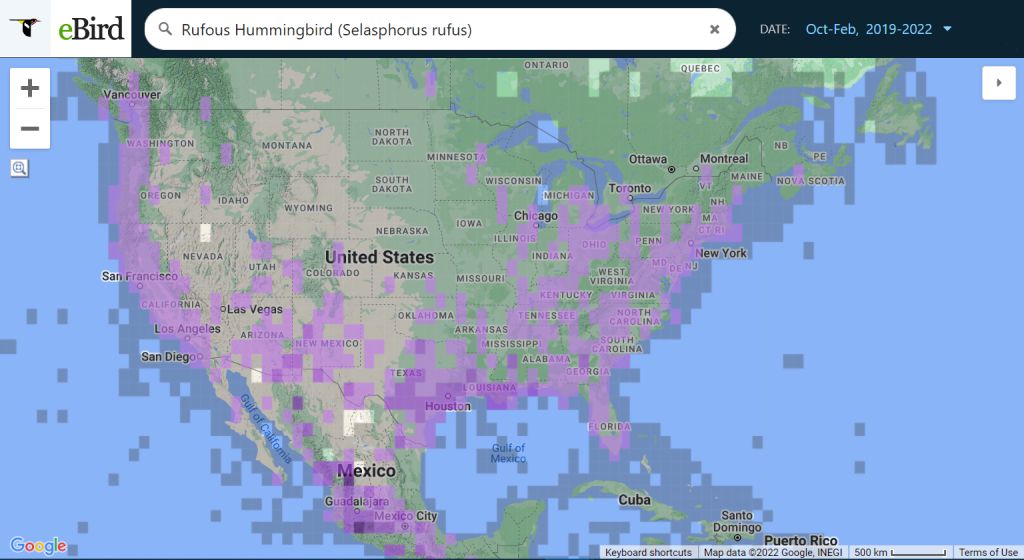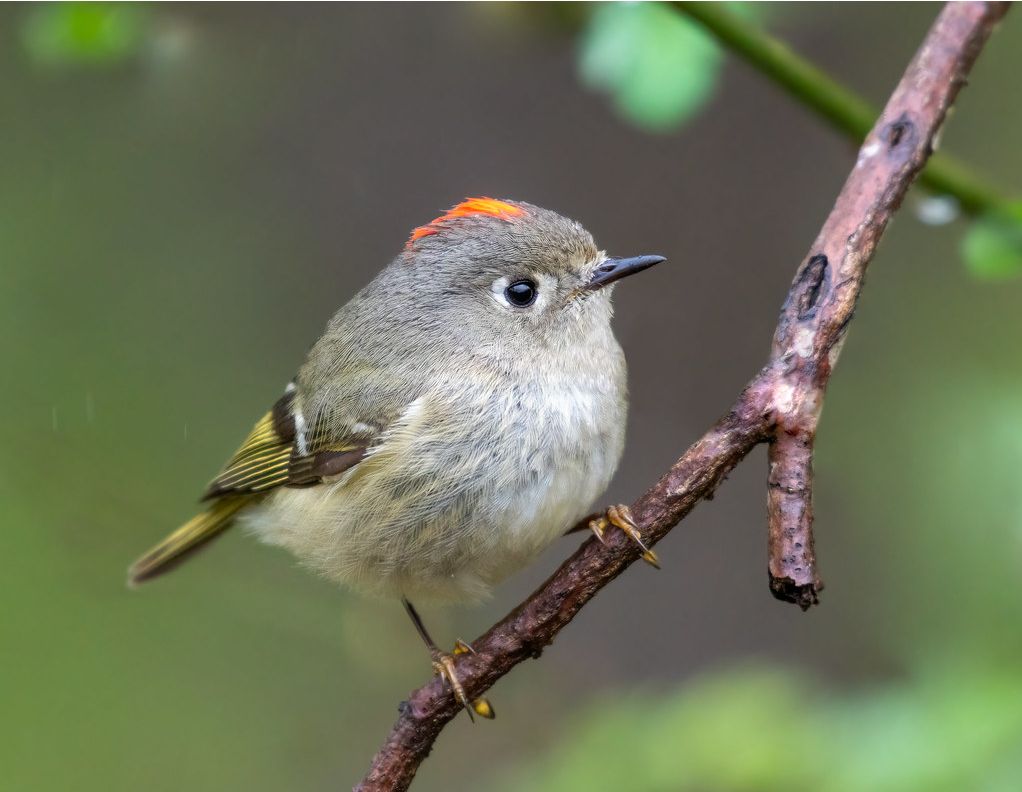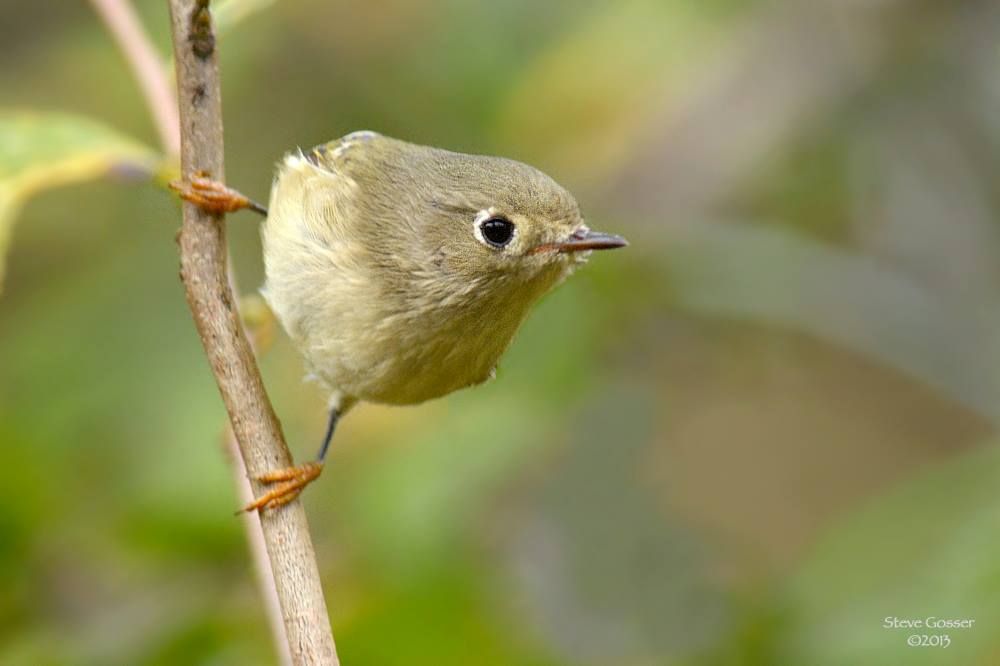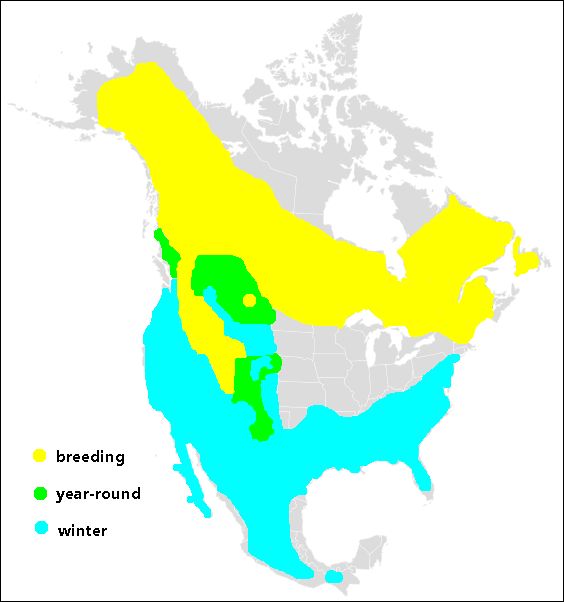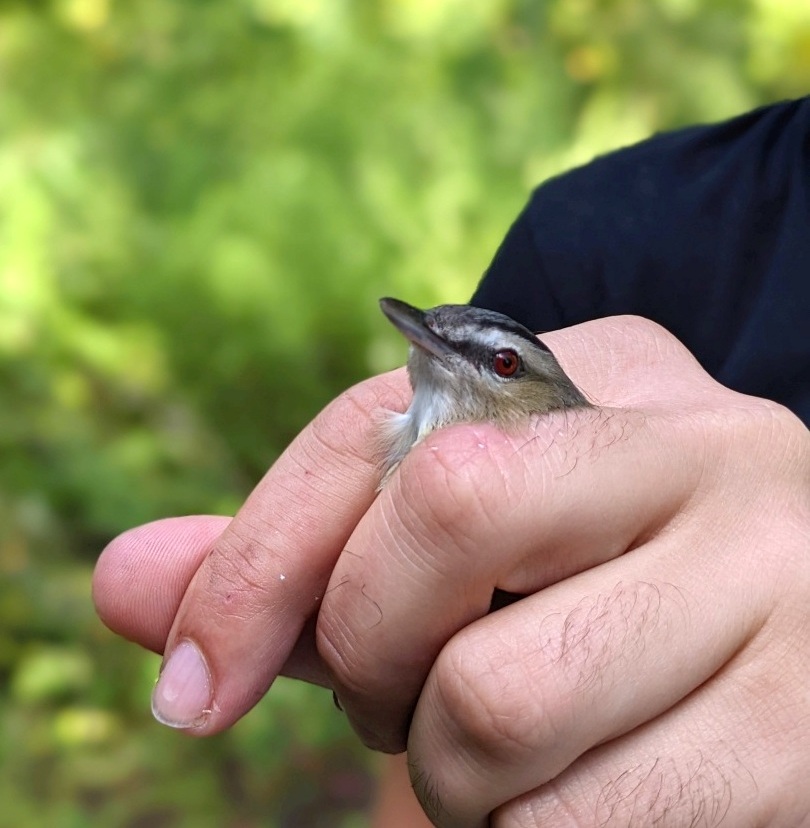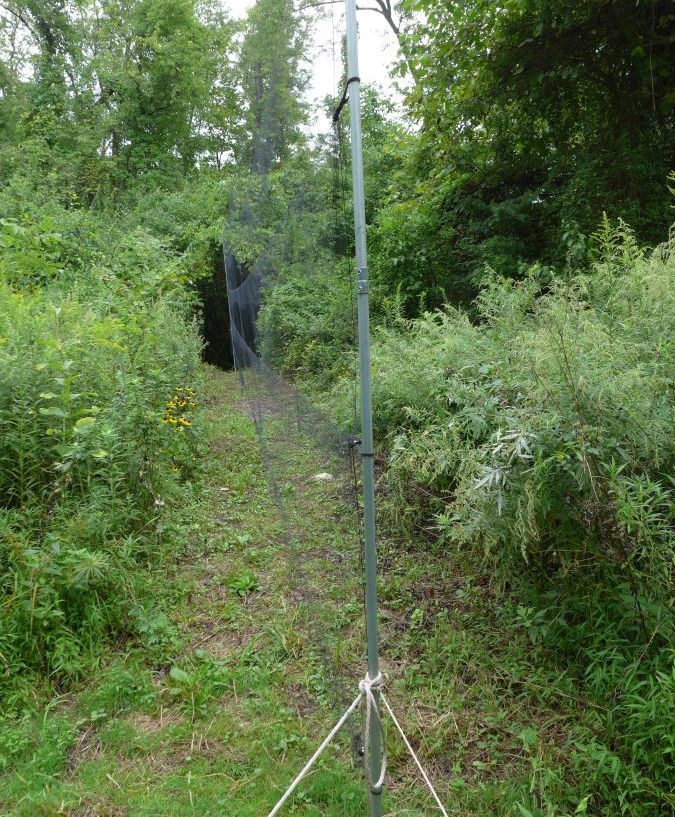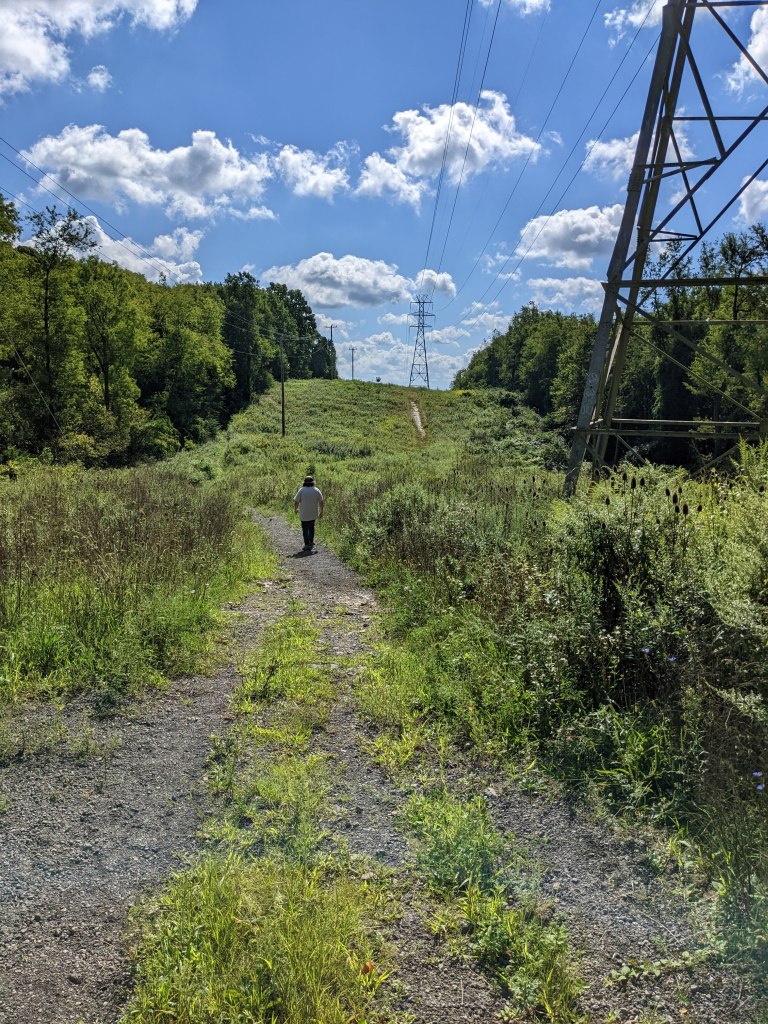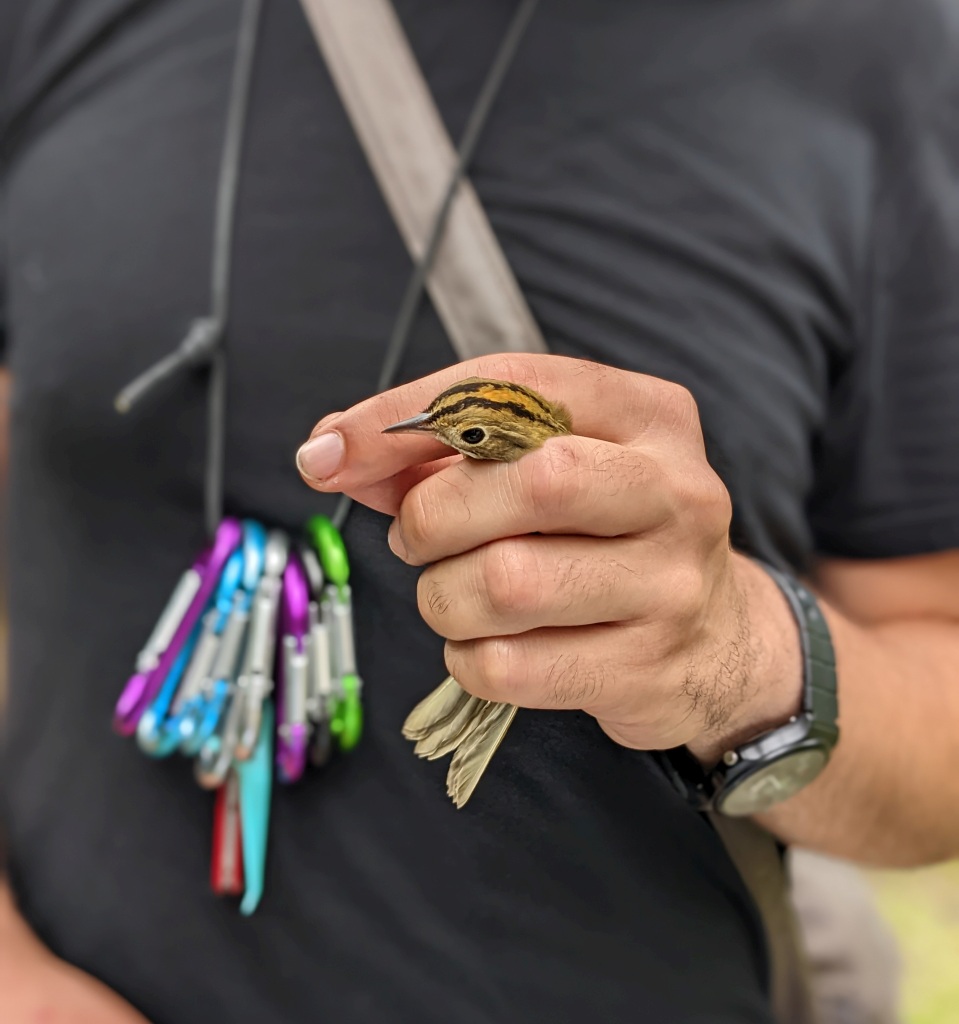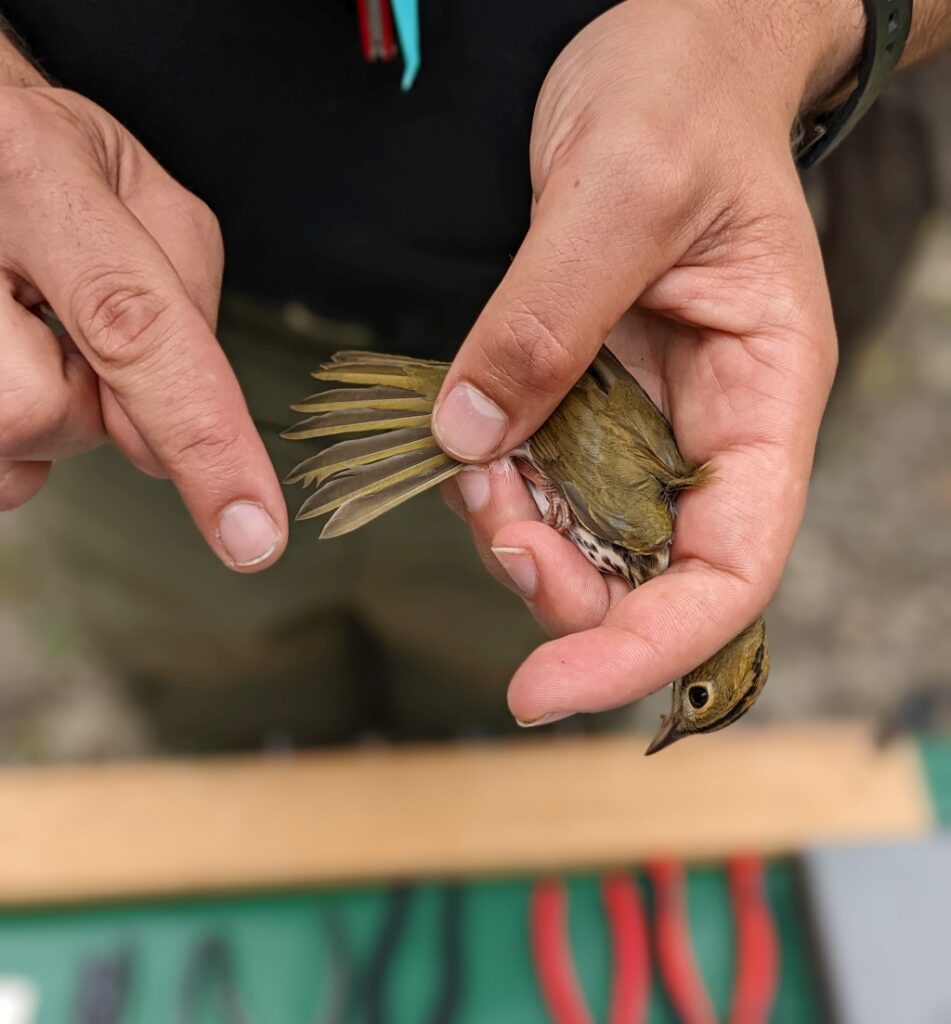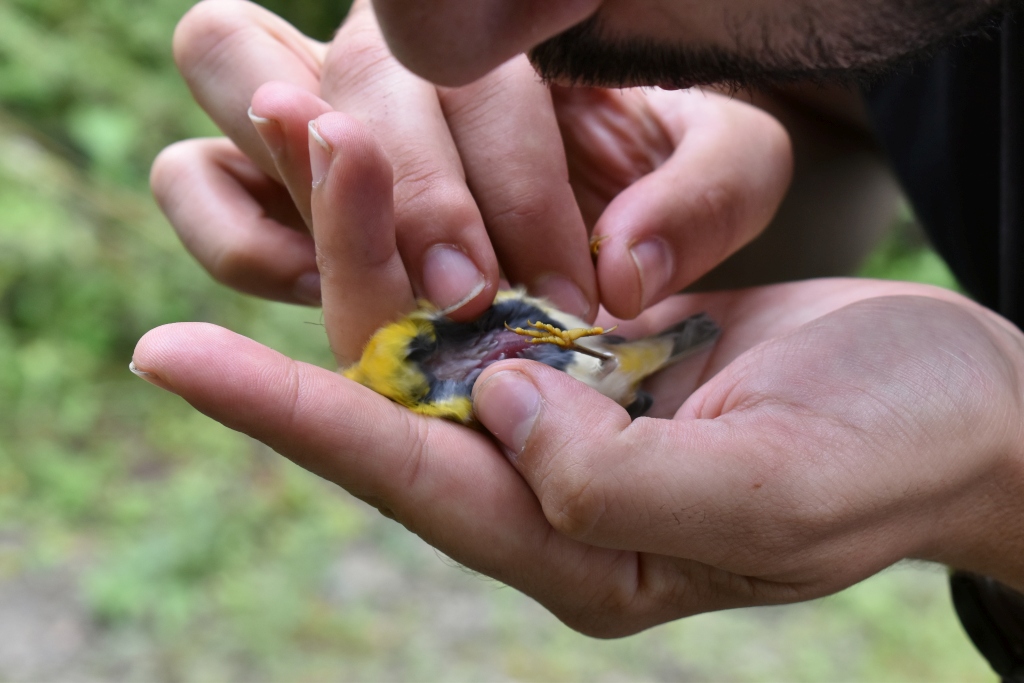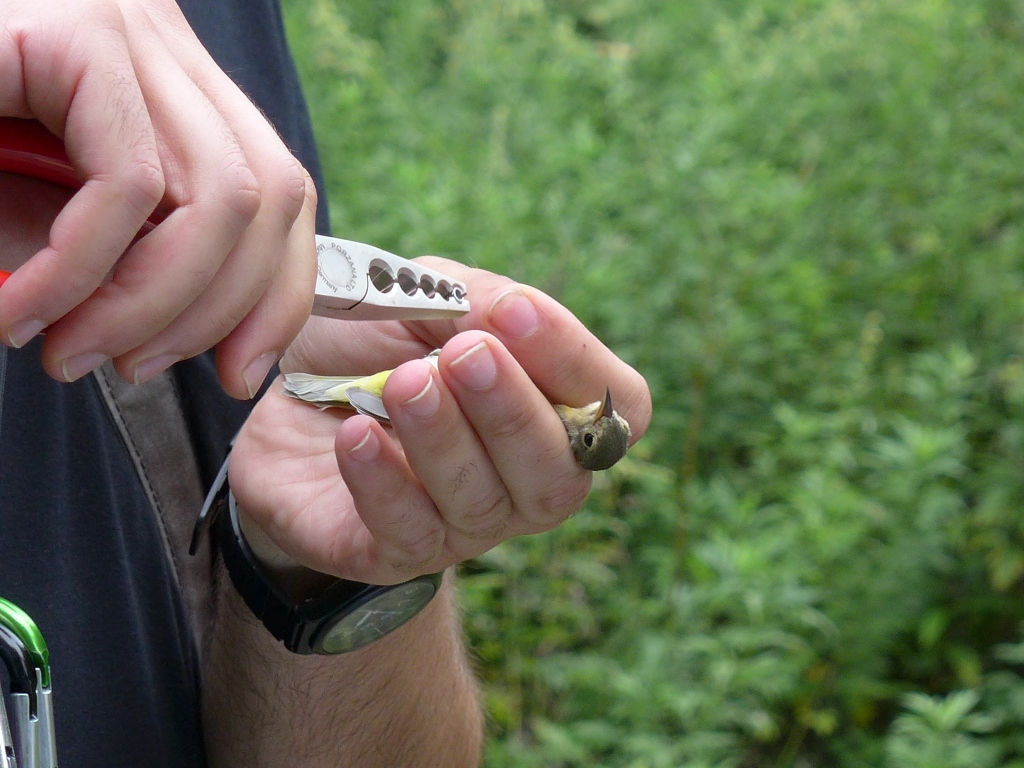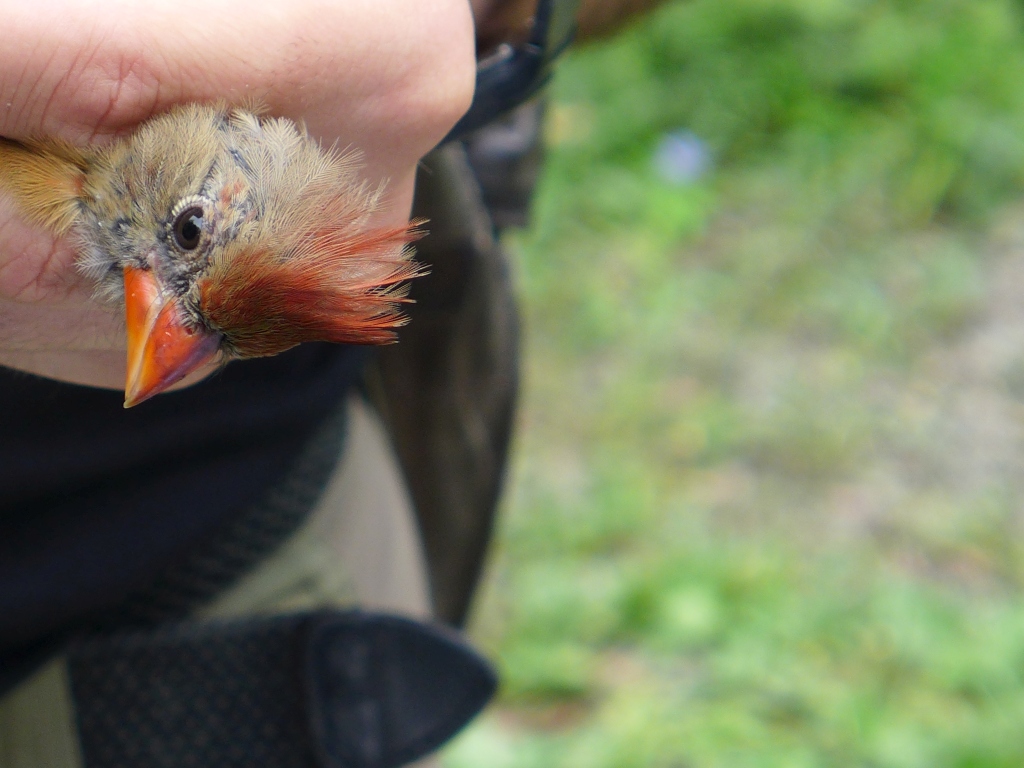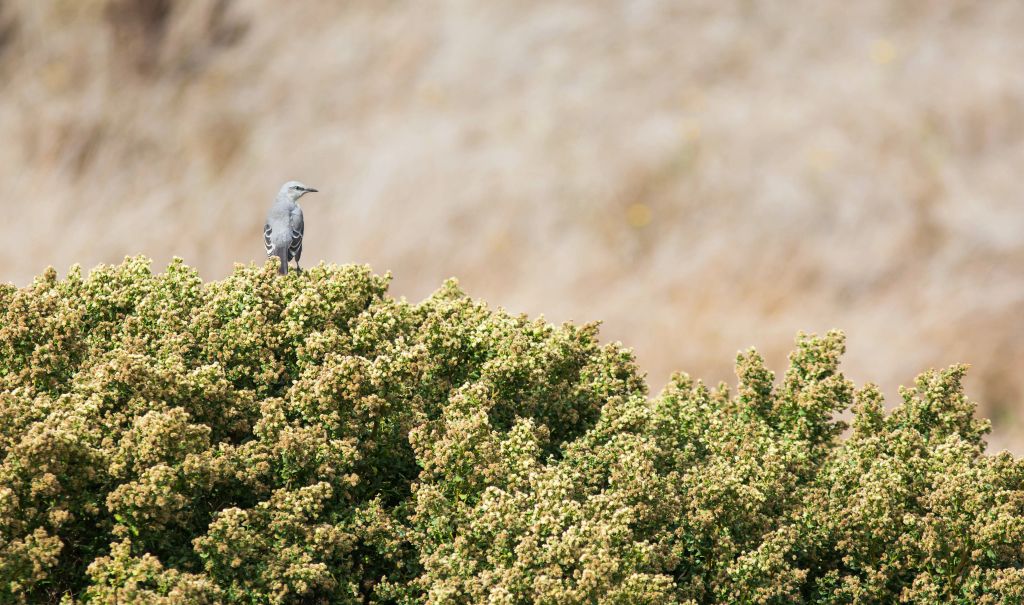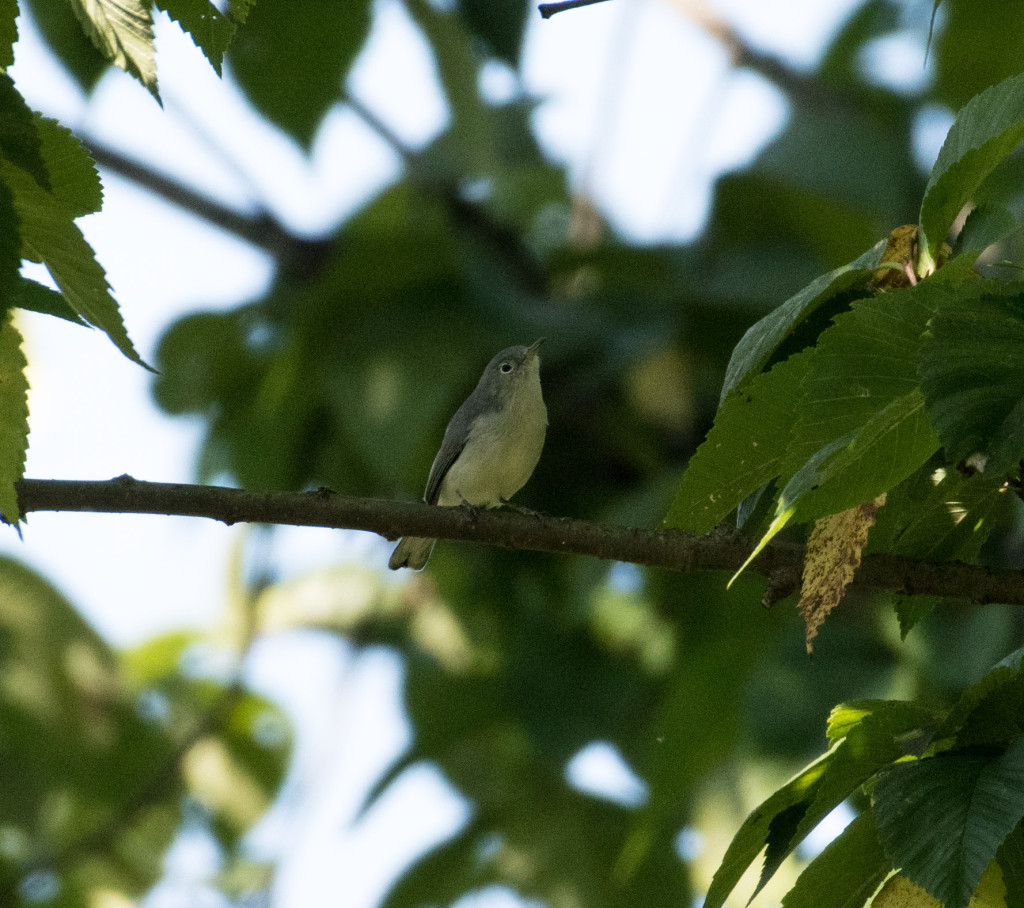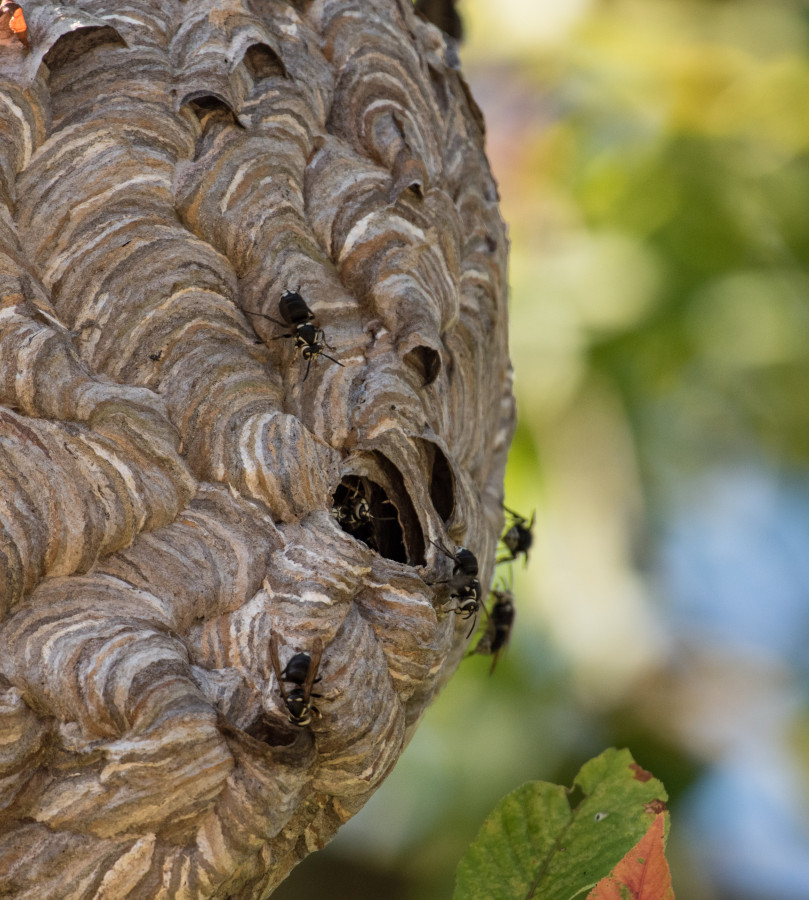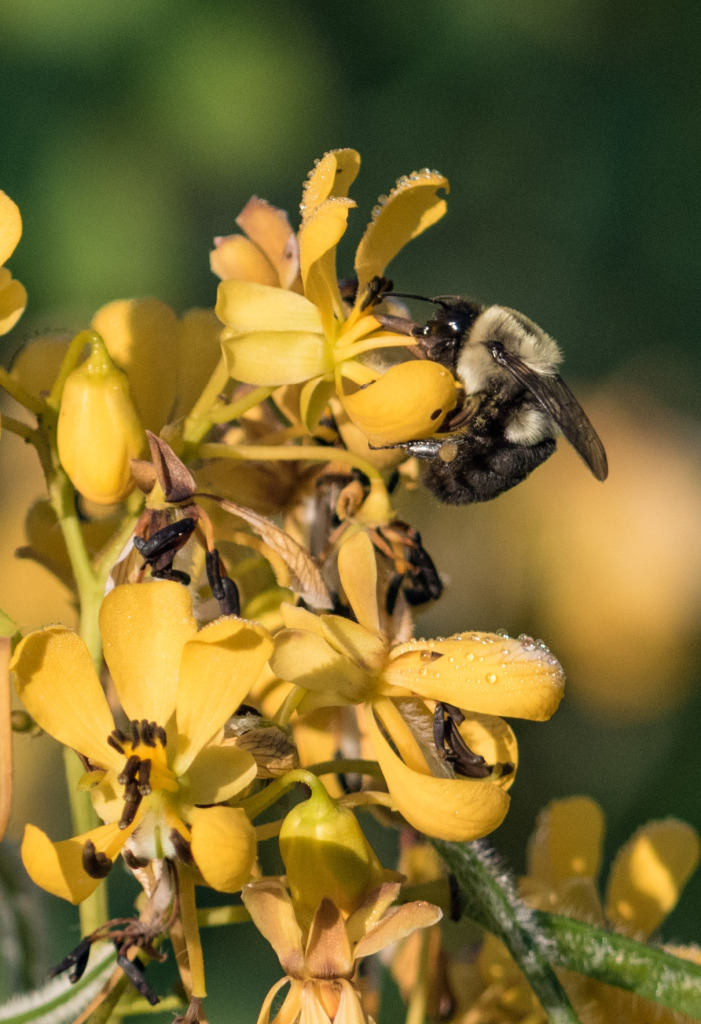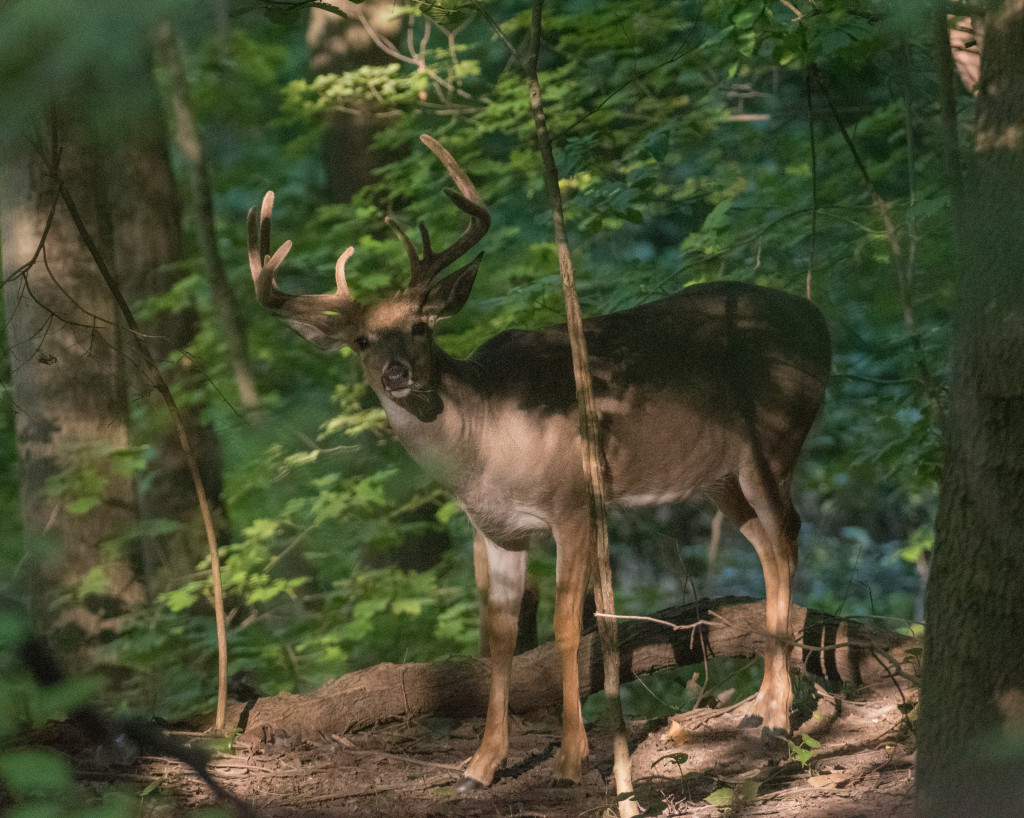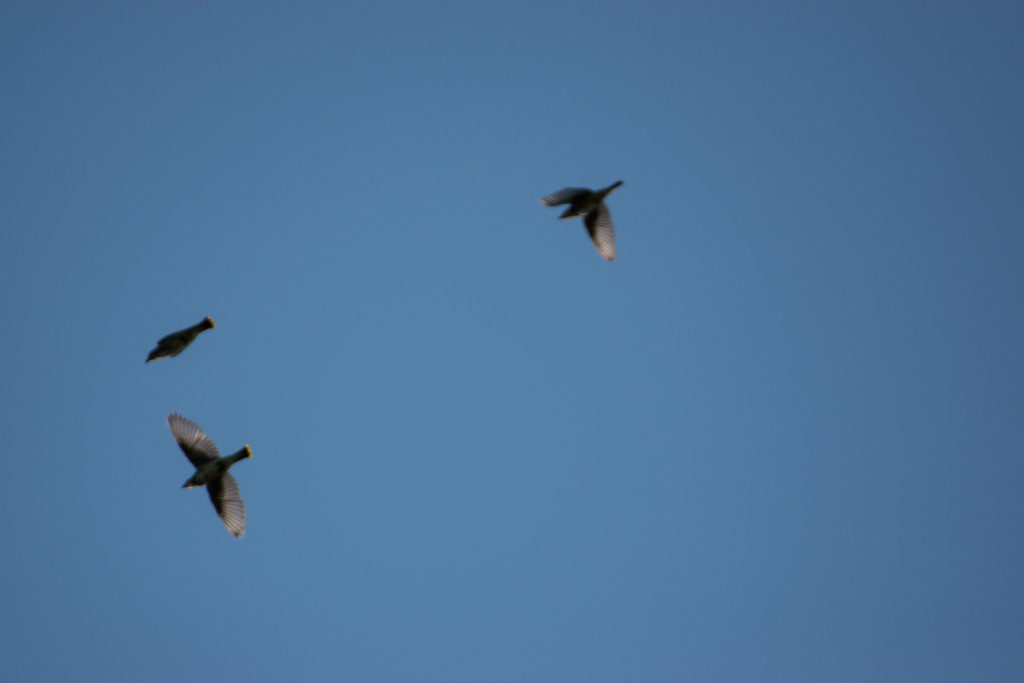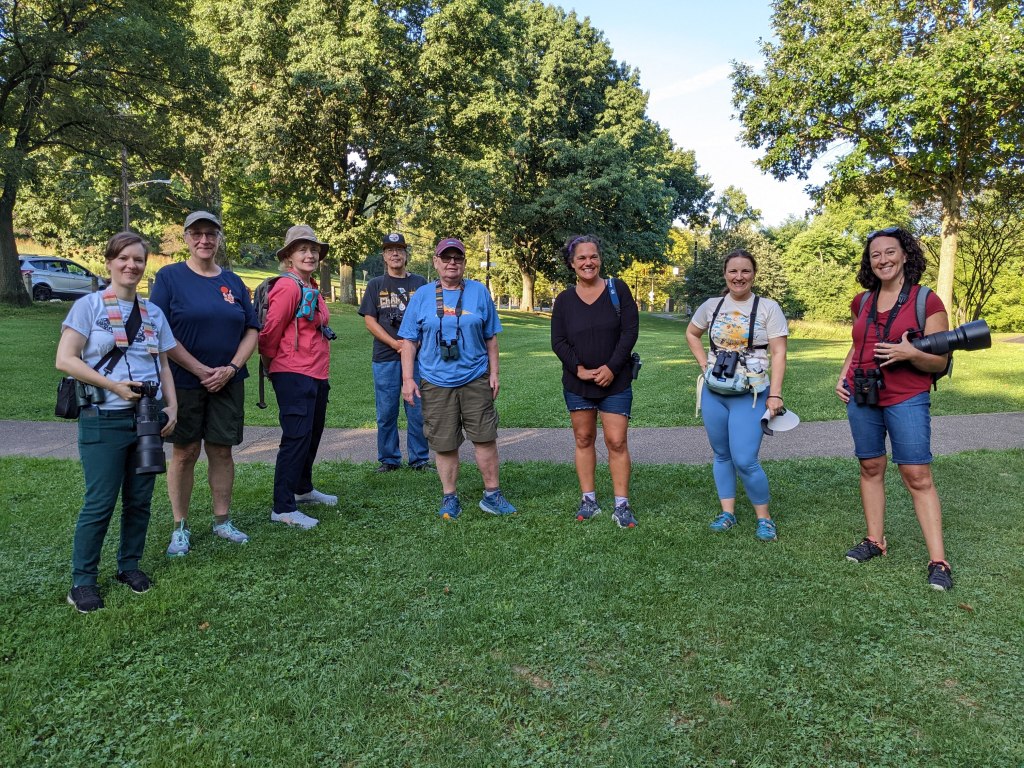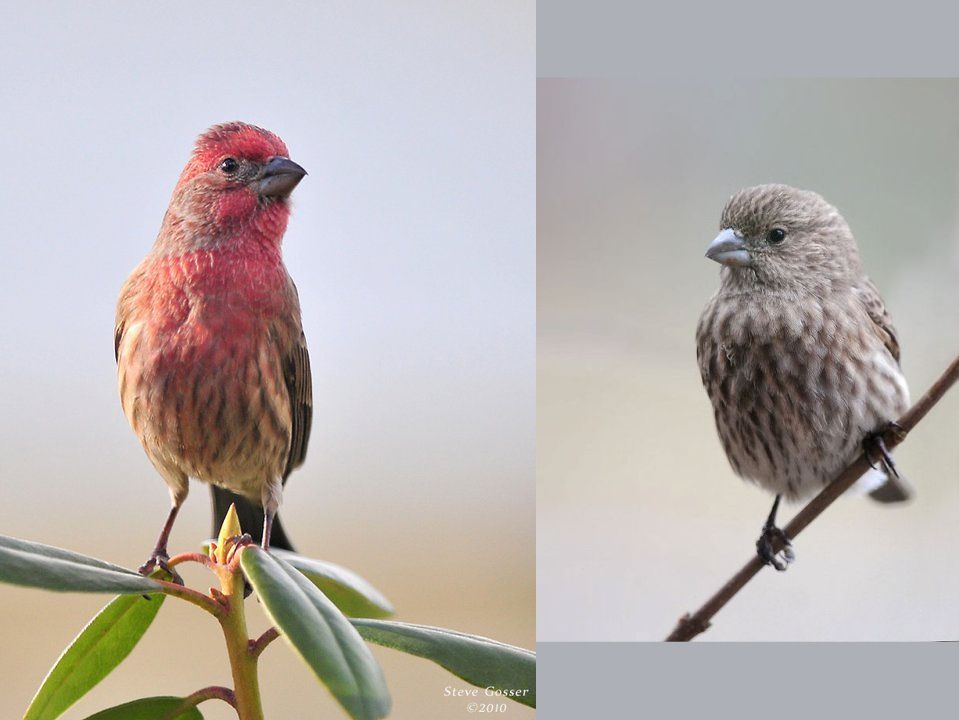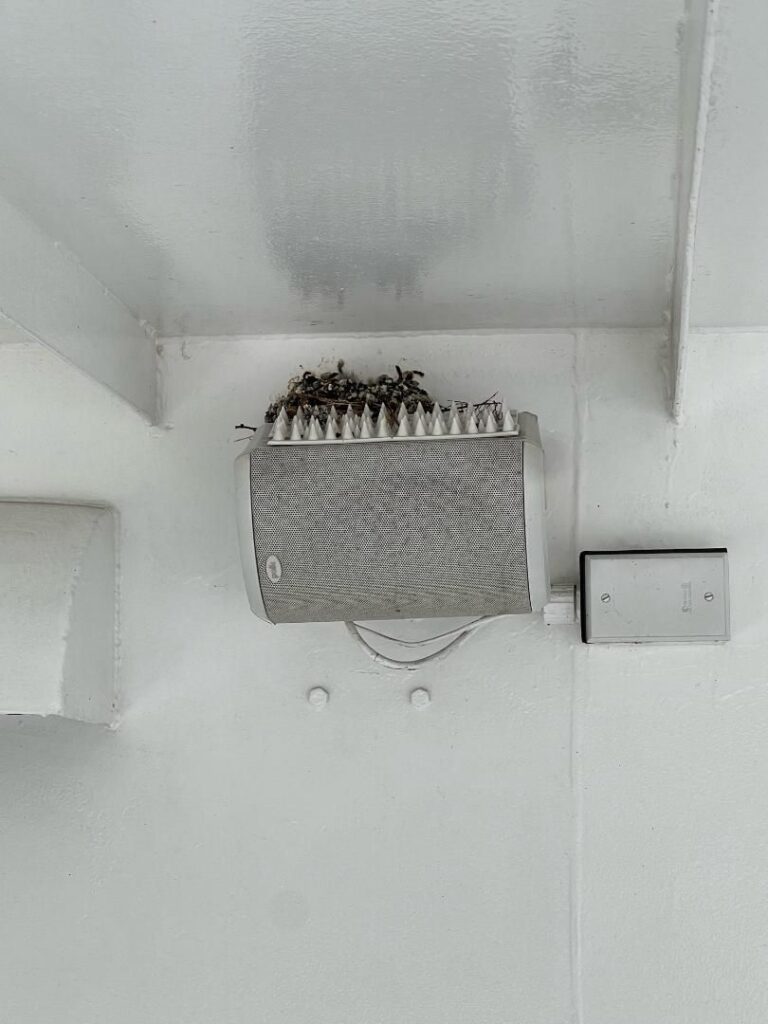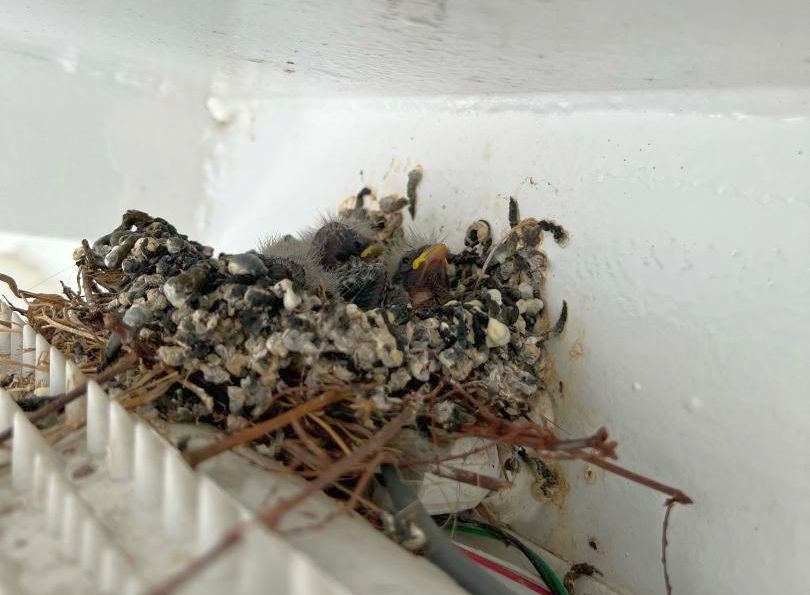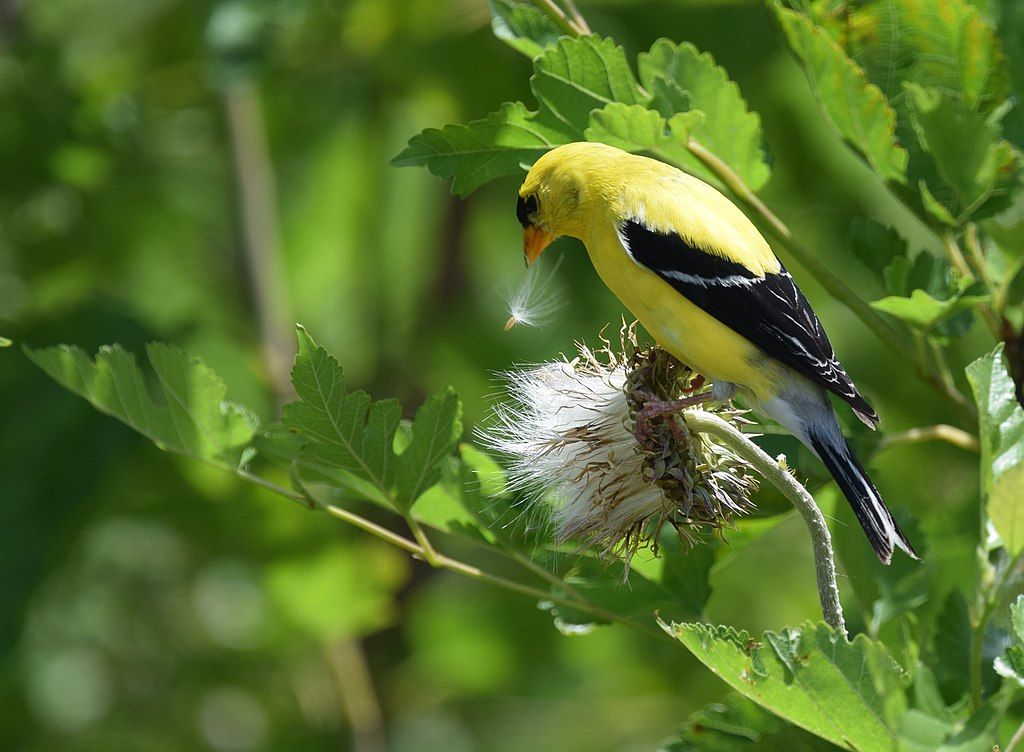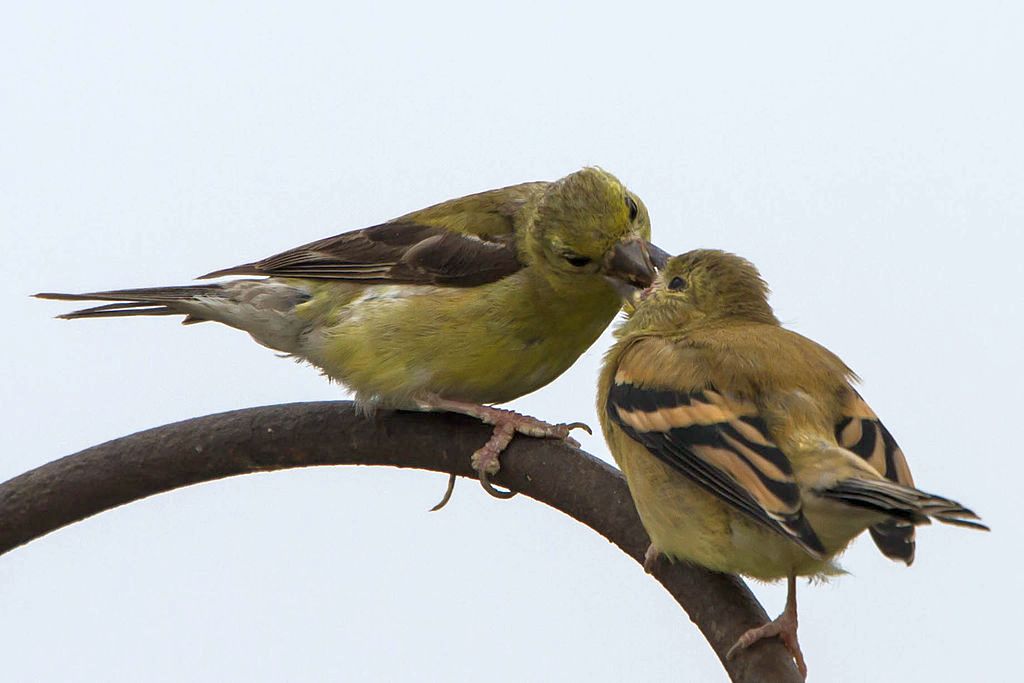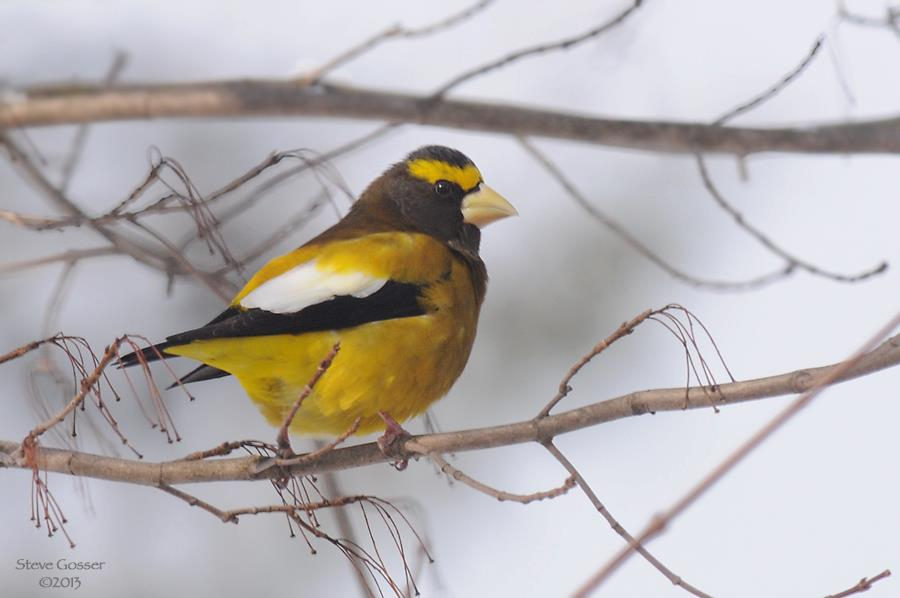
21 November 2022
In September the Finch Research Network’s Winter Finch Forecast predicted that evening grosbeaks and pine siskins would irrupt southward this winter. In the past week Pennsylvania Rare Bird Alerts reported 55 sightings of evening grosbeaks and 11 of pine siskins in the state. Some are in western Pennsylvania right now and both are seed-eaters so you might see them at your feeders. Here’s what to look for.
Evening grosbeak (Coccothraustes vespertinus)
Evening grosbeaks are big bulky finches, larger than northern cardinals, that are shaped like rose-breasted grosbeaks. The male is bright yellow with black accents and white wing patches. When you see him at your feeder you’ll fall in love.

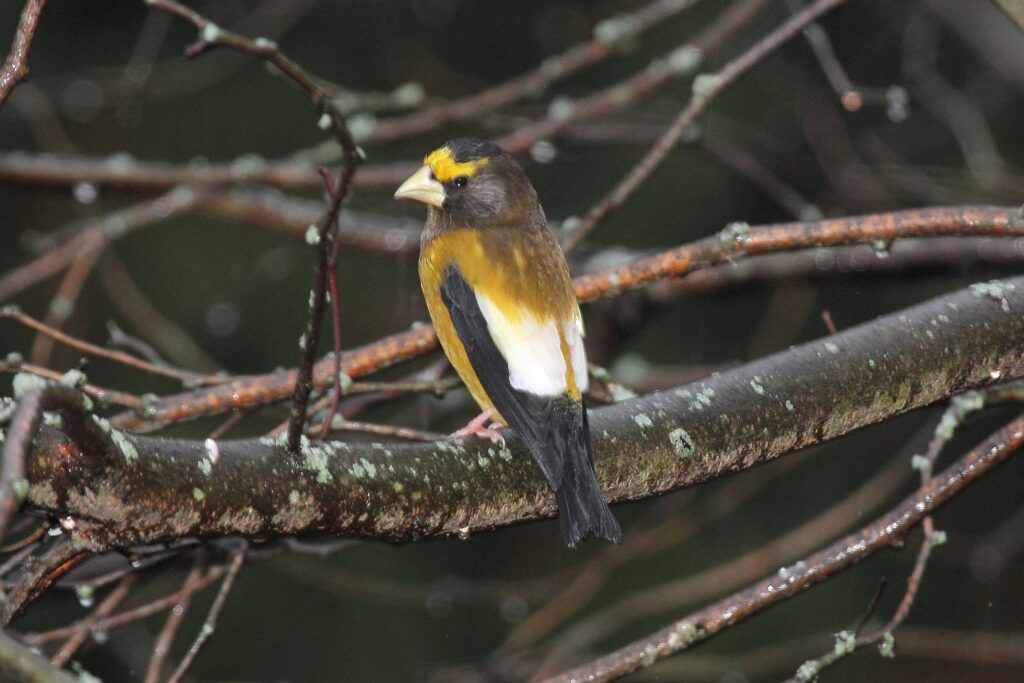
The females and immature males are not as striking but still beautiful. In bright light they look like enormous goldfinches with fat necks and big beaks.
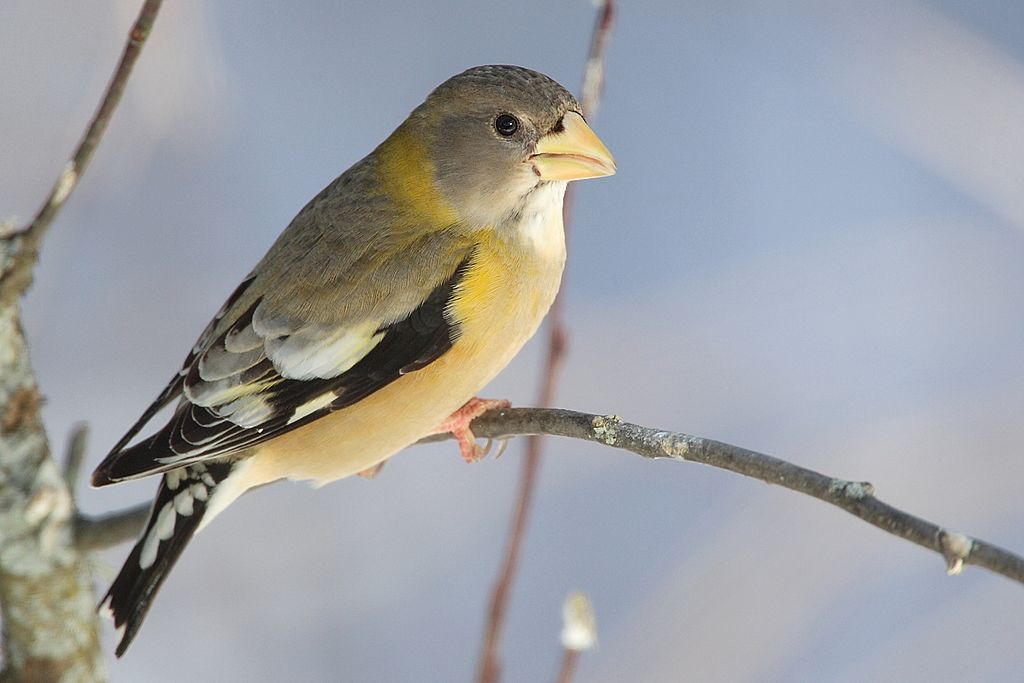
On gray days the females and immatures look drab but unmistakable for their size and huge beaks.
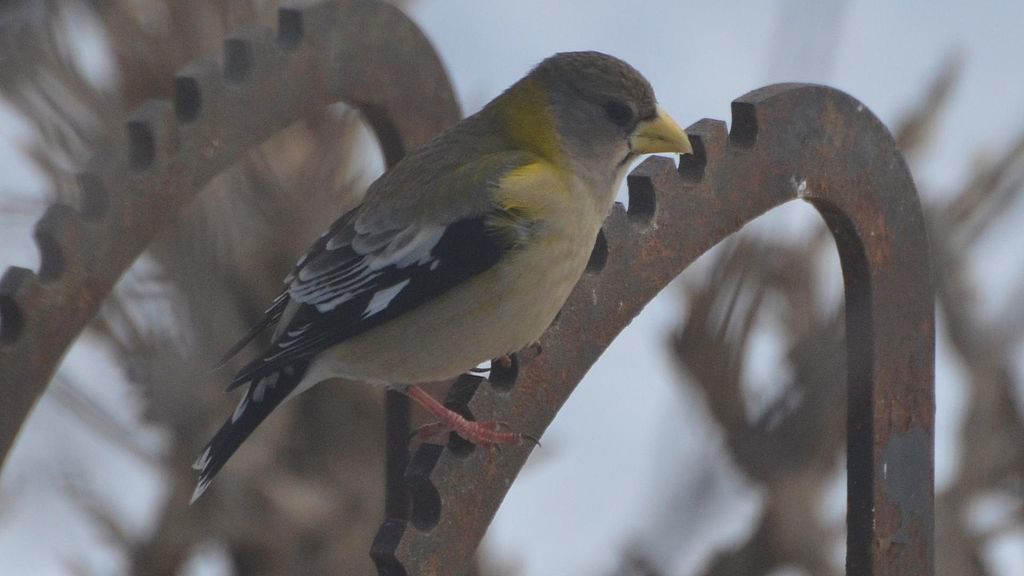
Evening grosbeaks love sunflower seeds so keep some on hand to attract any that might be flying over. Doug Gross says they also love these wild foods: Seeds of box elder, ash, elm, tulip poplar, hackberry, pine, spruce, larch. Fruits of cherries, apples, crabapples, poison ivy, hawthorn, juniper (red cedar), Russian olive.
This PA map shows where evening grosbeaks have been reported in eBird this month through 20 Nov.

p.s. How rare are evening grosbeaks? Their population has declined 90% in the past 50 years! Watch this video by Wild Excellence Films called Irruption: An Opportunity For Evening Grosbeak Conservation about David Yeany’s project to tag and track evening grosbeaks and learn more about the threats they face.
Pine siskin (Spinus pinus)
Pine siskins resemble female house finches but are warm brown in color (not gray-brown) and have sharp pointy beaks with a faint touch of yellow on their wings. They often hang out with goldfinches.
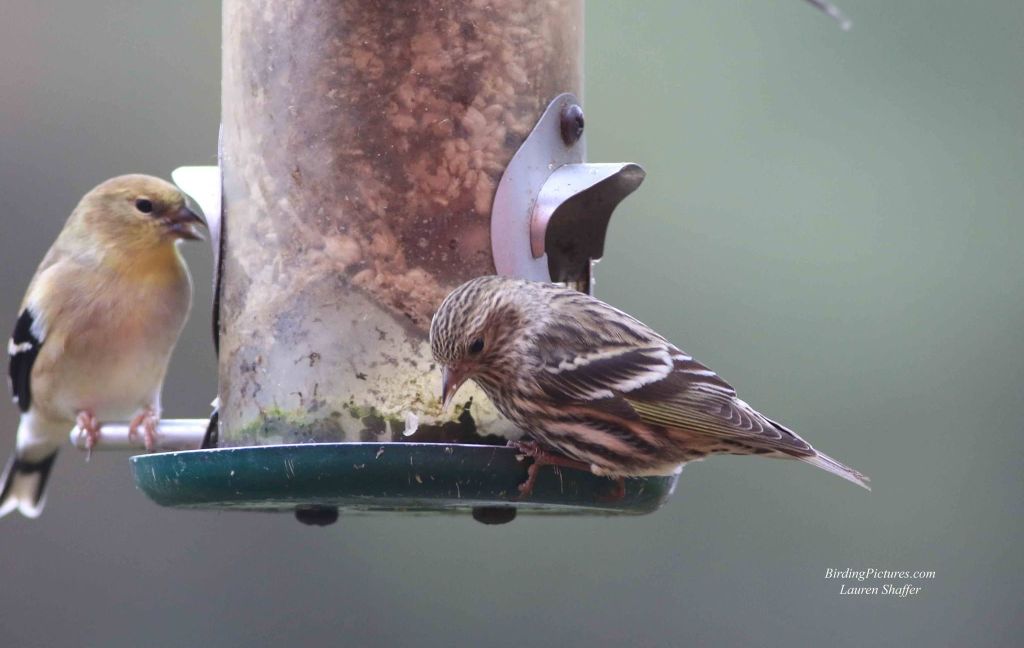
They love niger at the feeder and pull seeds from alder and arborvitae cones.

Though petite in size, pine siskins strenuously defend their feeder perches against other birds. Here one shouts at a male house finch.
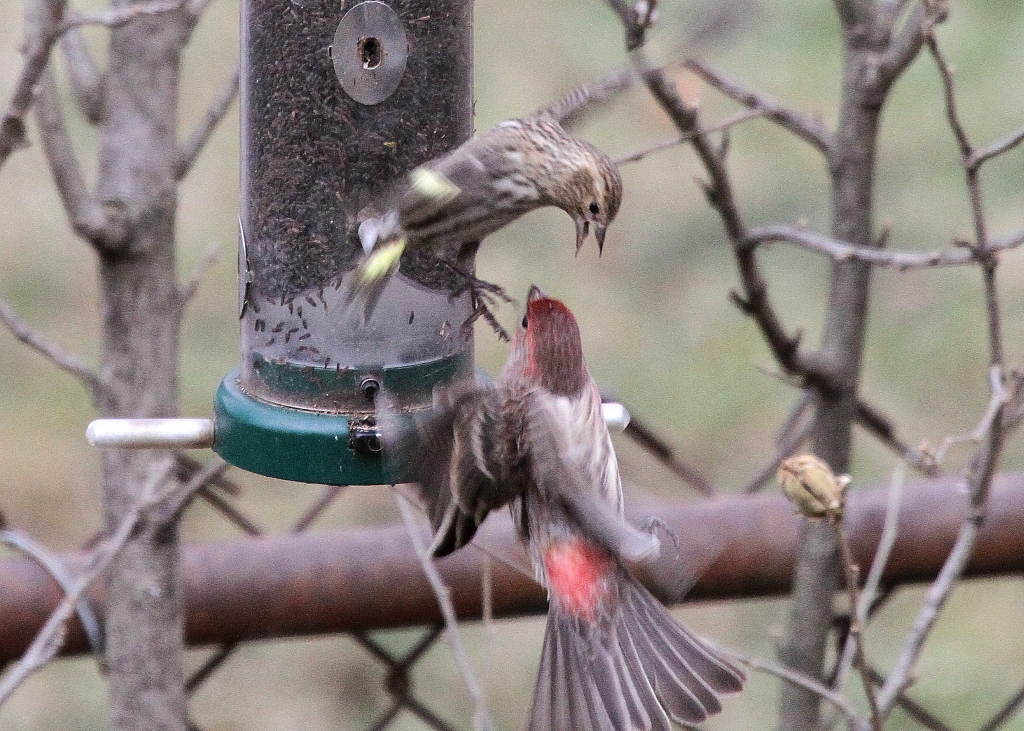
Keep your niger feeder filled and look hard at those goldfinches. This PA map shows where pine siskins have been reported in eBird this month through 20 Nov.
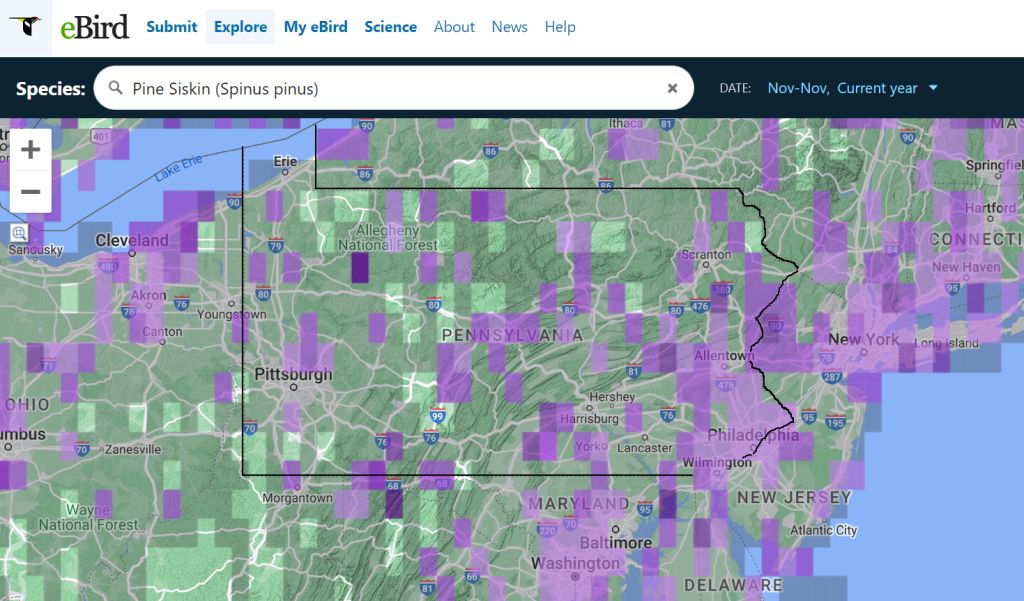
Watch your feeders for two rare birds. You may get lucky!
(photos by Steve Gosser, Lauri Shaffer, Tom Moeller and from Wikimedia Commons, maps from eBird; click on the linked captions to see the originals)
